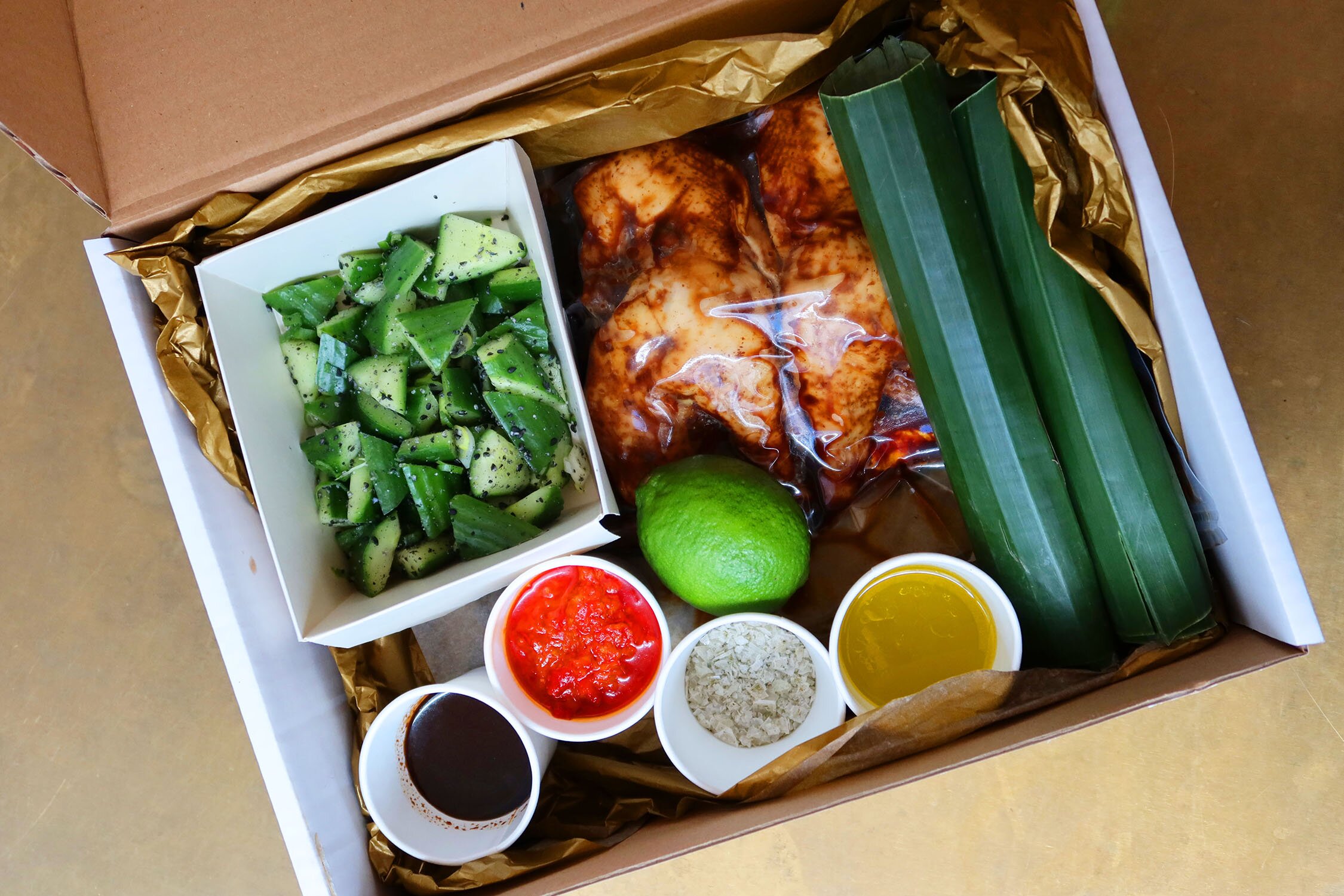DIY delights: how to master the meal kit market
Since customers can’t come to restaurants, restaurants have come to customers, flat-packing the ingredients for signature dishes in a box, along with instructions for assembling and cooking at home. Caroline Baldwin reports.
In recent months there has been an explosion of at-home meal kits coming onto the market as restaurants up and down the country try to extend their food offering to attract a new customer base during lockdown.
Unsurprisingly, the demand for customers’ favourite dishes has not gone away while restaurants have been closed. We’ve seen the likes of Dishoom selling bacon naan roll kits, Pizza Pilgrims sending dough balls through the post, and Ottolenghi’s beloved shakshuka condensed into a pouch that can be sent to people’s homes, ready to create that much-missed weekend brunch.
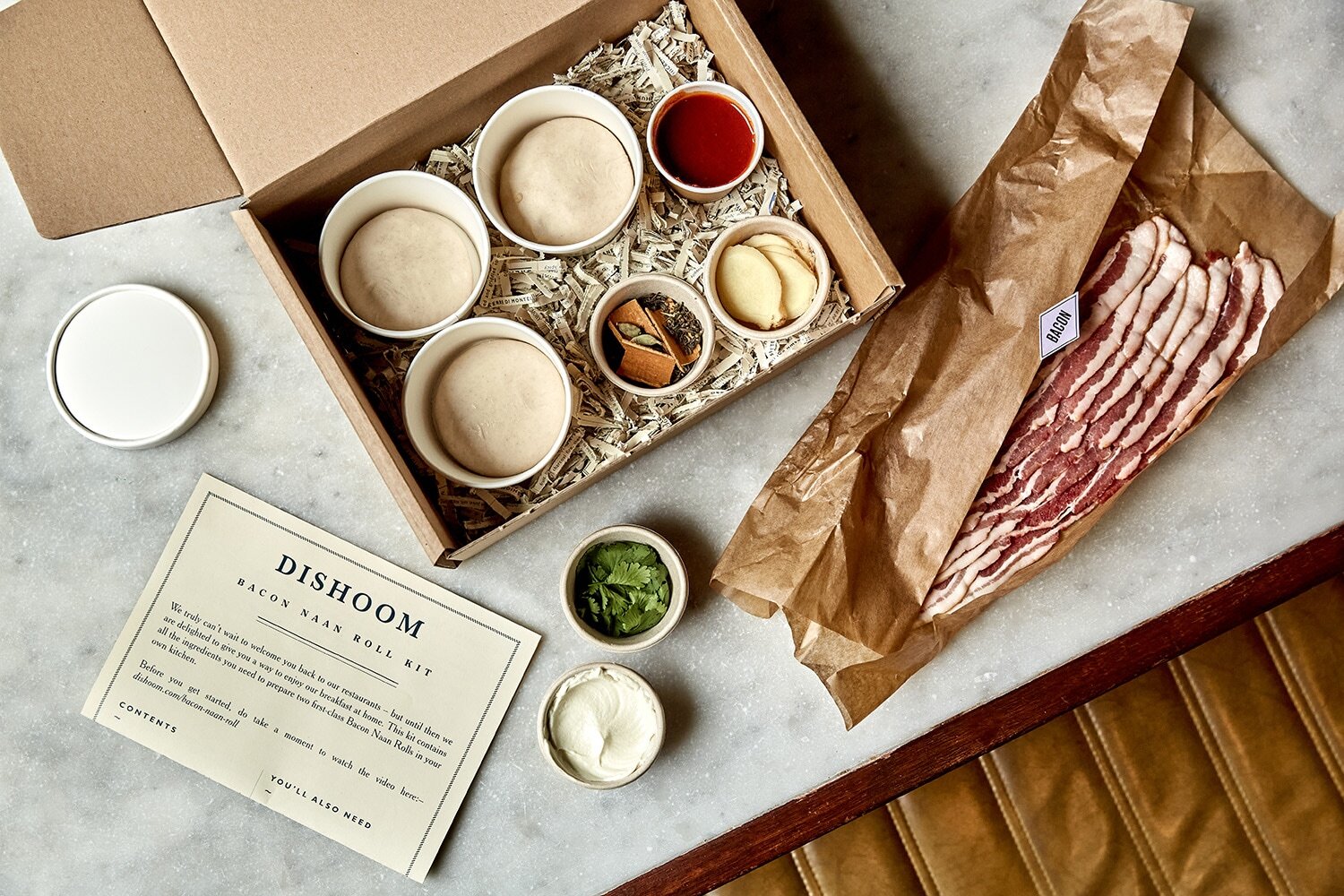
Fuller’s recently launched a one-off Sunday roast delivery kit for Mother’s Day. The £120 box featured a three-course meal for four, centred around a whole roasted lemon and thyme chicken, ready to be popped in the oven, with a cook-along video to guide customers through the process. The box was a hit, and the pubco has used the trial to capture customer feedback in hopes of repeating the exercise with another box soon.
Michelin-starred chefs have also taken to the idea with gusto: Aktar Islam and Tommy Banks have got in on the action; Leeds-based chef Michael O’Hare has created a digital spin-off of his restaurant called the Naan Behind the Curtain; and Monica Galetti recently launched an at-home menu for her much-awaited offering. Sat Bains, on the other hand, returned to his roots by teaming up with his mother to produce Punjabi street-food brand Momma Bains, which has shipped thousands of samosas and curry kits up and down the country.
Meals by mail
For John Devitt, co-founder of Koya, simplicity and accessibility have been key in creating his Koya Mail online meal kits.
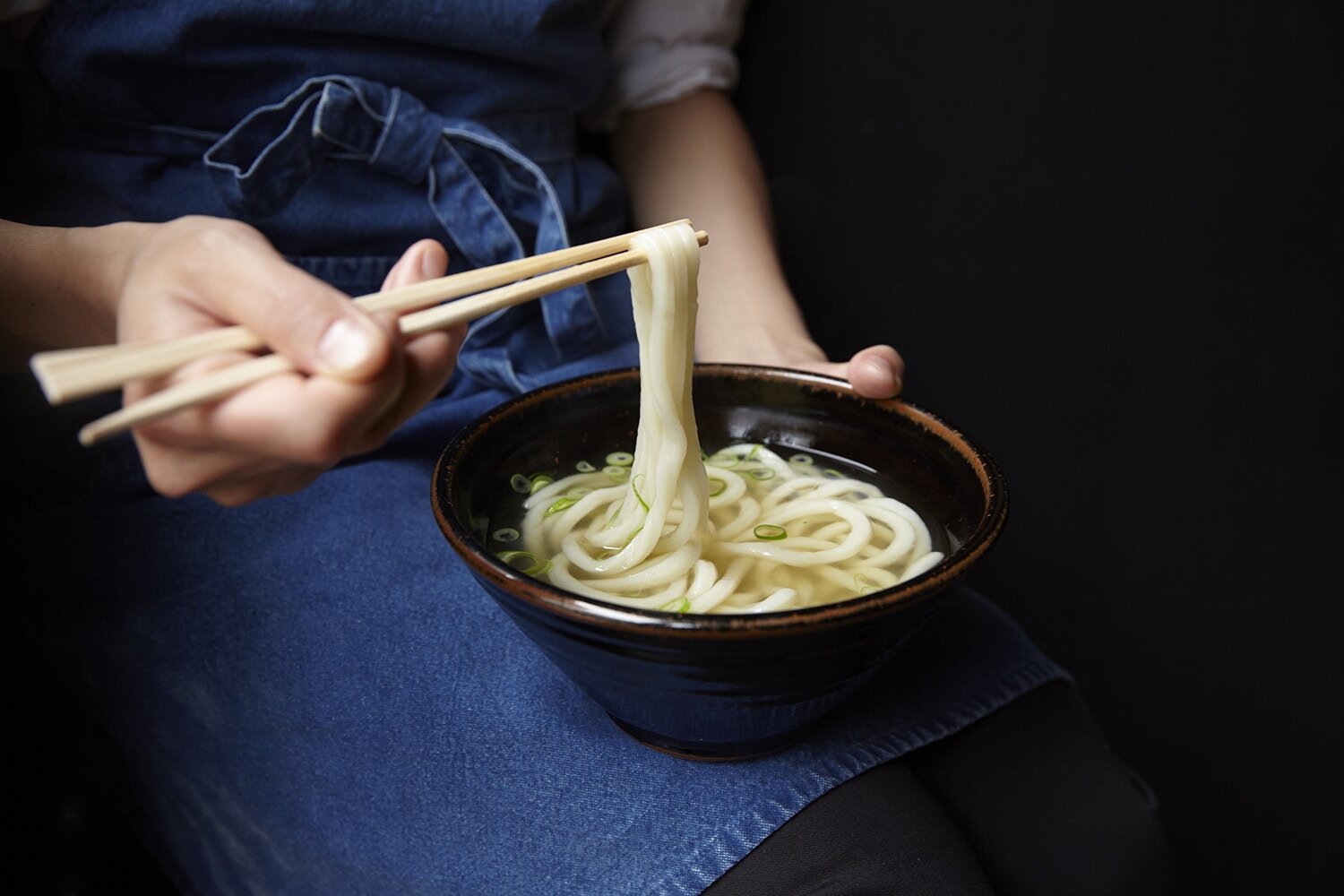
“We wanted ours to be small and not too expensive. A lot of the meal kits are £55 to £75-plus, and that’s quite a big commitment on price and time, and also the level of education and capacity needed by the customer to do something in the evening,” Devitt explains. “Ours is just udon noodles and a dashi broth. The broth is the magic and it is really clean and hugely flavoursome.”
As part of ensuring the product is as simple as possible, Devitt decided to include next-day delivery from DPD in the £14 price tag. The kit is enough for two generous servings that can last in the fridge for up to seven days.
Setting up the online offering wasn’t as simple as the dish itself. The plan was to launch in January, but getting the tech up and running was a bigger piece of work than anticipated, and Koya Mail finally launched a month later.
“If I had known how difficult it was going to be before we started, I’m not sure I would have had the patience for this,” he admits. “It’s incredibly intricate, and you have to make the noodles slightly differently, package them up, and make the website quite particular.”
Koya ended up partnering with retail platform Shopify to power its minimalist website, which Devitt is now very pleased with, despite the headaches of discovering how to set up an online retail offering.
“It was a huge learning curve. We learned an awful lot very quickly – and about things we didn’t even know we needed to know,” he says. Considerations included a surge in demand forcing Koya to introduce nominated dates for orders, and DPD’s refusal to approve the first letterbox design because it was a food item. “We’re still continuing to adjust certain parameters. It’s just not as simple as put it online and it will sell.”
It was a huge learning curve. We learnt an awful lot very quickly – and about things we didn’t even know we needed to know
Menu testing
The logistics of setting up an online meal kit took Calvin Von Niebel, executive chef at Ottolenghi, out of his comfort zone, as he suddenly had to get his head around websites and packaging. “There’s a lot involved,” he says. “But we needed to do it. And it’s really helped us survive, stay busy and keep people employed.”

Ottolenghi’s at-home offering is a complex one. It uses the Slerp ecommerce platform for its local deli takeaways, while the nationwide delivery of Ottolenghi Ready – which includes its shakshuka and curry pouches – can be done directly through its website and via Farmdrop. Meanwhile, the brand chose Dishpatch for its meal kit delivery partner.
While working with various delivery platforms and organising suppliers take up a lot of Von Niebel’s time, planning the menu still has the utmost priority. He says it just means he has to think a little differently and “test, test and test again”.
“It’s all been a bit of a slog with the amount of testing we have to do,” he says. “You have to make sure before you launch your menu that not only have you done the tasting and made sure the food is good, but it’s also all beautifully photographed for the website and Instagram, as well as writing detailed serving instructions. And you have to make sure the packaging is right.”
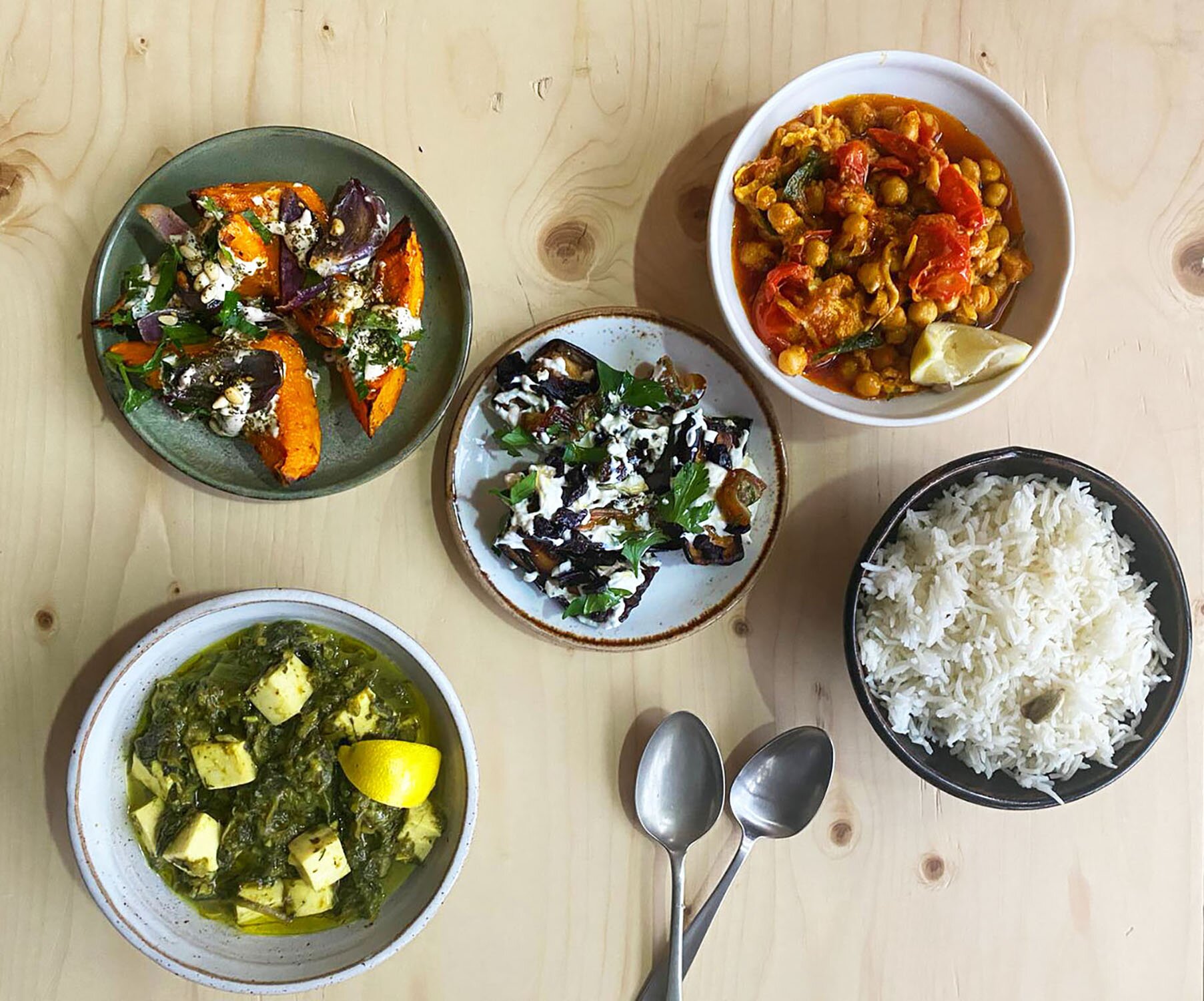
Each element of the menu is tested by being delivered to team members to see what works and what doesn’t. The assembly of the boxes is outsourced to Dishpatch, which sends large gastro containers to Ottolenghi’s kitchen. The food is put into the gastronorms, along with information on how many grams of each ingredient goes into each dish. The containers are then taken to a Dishpatch kitchen, which divides the food up, and assembles and packages the meal kits. Von Niebel says this process takes away a lot of the pain for the restaurant.
He reveals that one of the biggest mistakes the team made was to change the dinner kit menu too often – every two weeks. Ottolenghi now changes it once a quarter, reflecting seasonal ingredients. “You need to give it enough time to become popular, and to really get it right you need to spend enough time on developing the next thing, while also reacting quickly to things that aren’t doing well.”
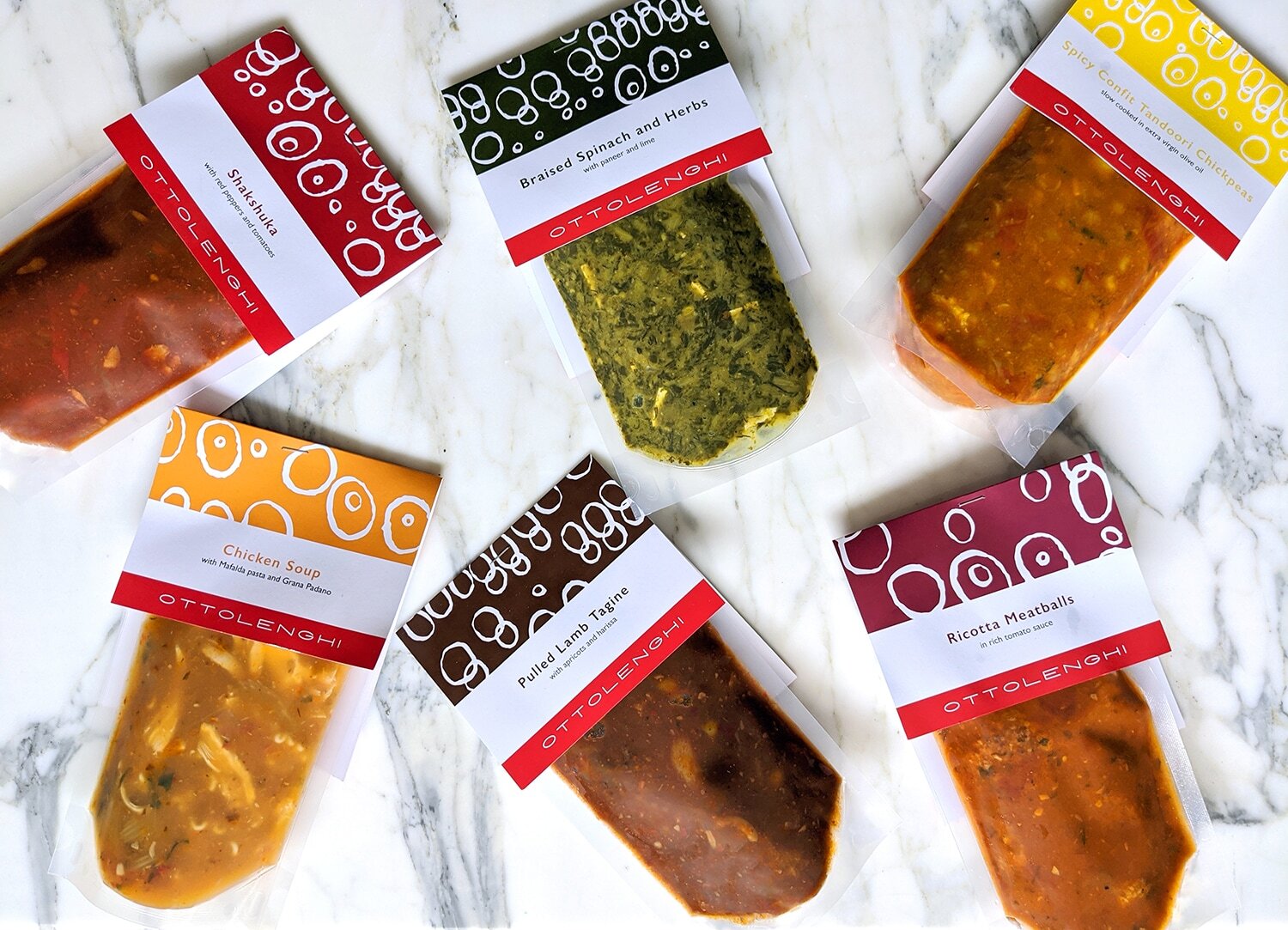
If there is one thing that the past year has taught us it is how quickly life can change. As the UK tentatively emerges from its third harsh winter lockdown, will these boxes and kits continue into the “new normal”?
Here to stay?
Gunpowder co-founder Harneet Baweja, who created the spin-off brand Empire Biryani during lockdown, believes there will be a rush of customers keen to return to his two London restaurants. If so, that could mean a considerable drop in numbers for his delivery kits, raising issues about the brand’s sustainability. That said, he believes it is “something that’s here to stay”.
“If someone in Manchester wants to try our food, the best way is to eat Empire Biryani through a meal kit, because not everyone can jump on a train, have a biryani and go back home again,” he says. “So I think we’re going to do this long-term, but we just don’t know how the market will shape up.”
That indeed is the big question mark hanging over these restaurants, which have had to deal with so much change over the past year.
While Koya’s Devitt is determined to continue – “We never want to turn it off; this will be a new string to our bow” – Von Niebel says that Ottolenghi intends to react to the changing market, with the pouch sauces firmly staying on the virtual menu, and he hopes the dinner kits will remain, too. But he points out that responding to your consumer is critical: “We’ll have to wait and see. As long as people want them, we will do them.”
The Berkeley breakfast in bed biked to your door
How does a hotel compete amid the sea of takeaway and at-home meal kit options on the market? Of course, an iconic hotel can offer its classics for delivery, like Claridge’s famous chicken pie, afternoon tea or even lobster wellington – which it delivered to 600 people in the month of December.
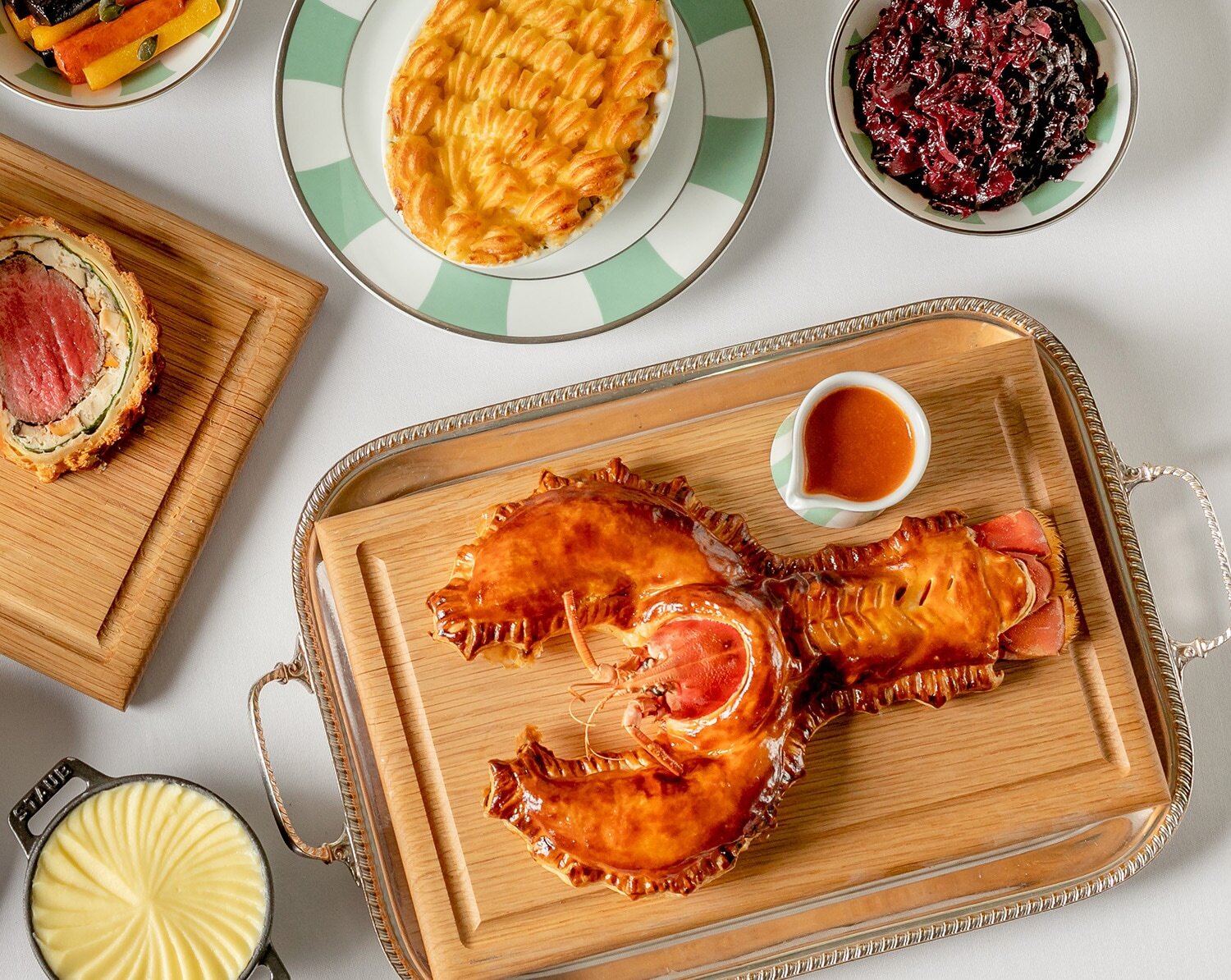
But in a bid to truly stand out and deliver a hotel experience at home, the Maybourne Hotel Group came up with an innovative breakfast in bed delivery from its Berkeley property in London.
It began by trialling the idea of delivering a hotel-style breakfast in bed on bikes in the Knightsbridge area during lockdown. In January, it extended the offer more widely across London via the Slerp platform.
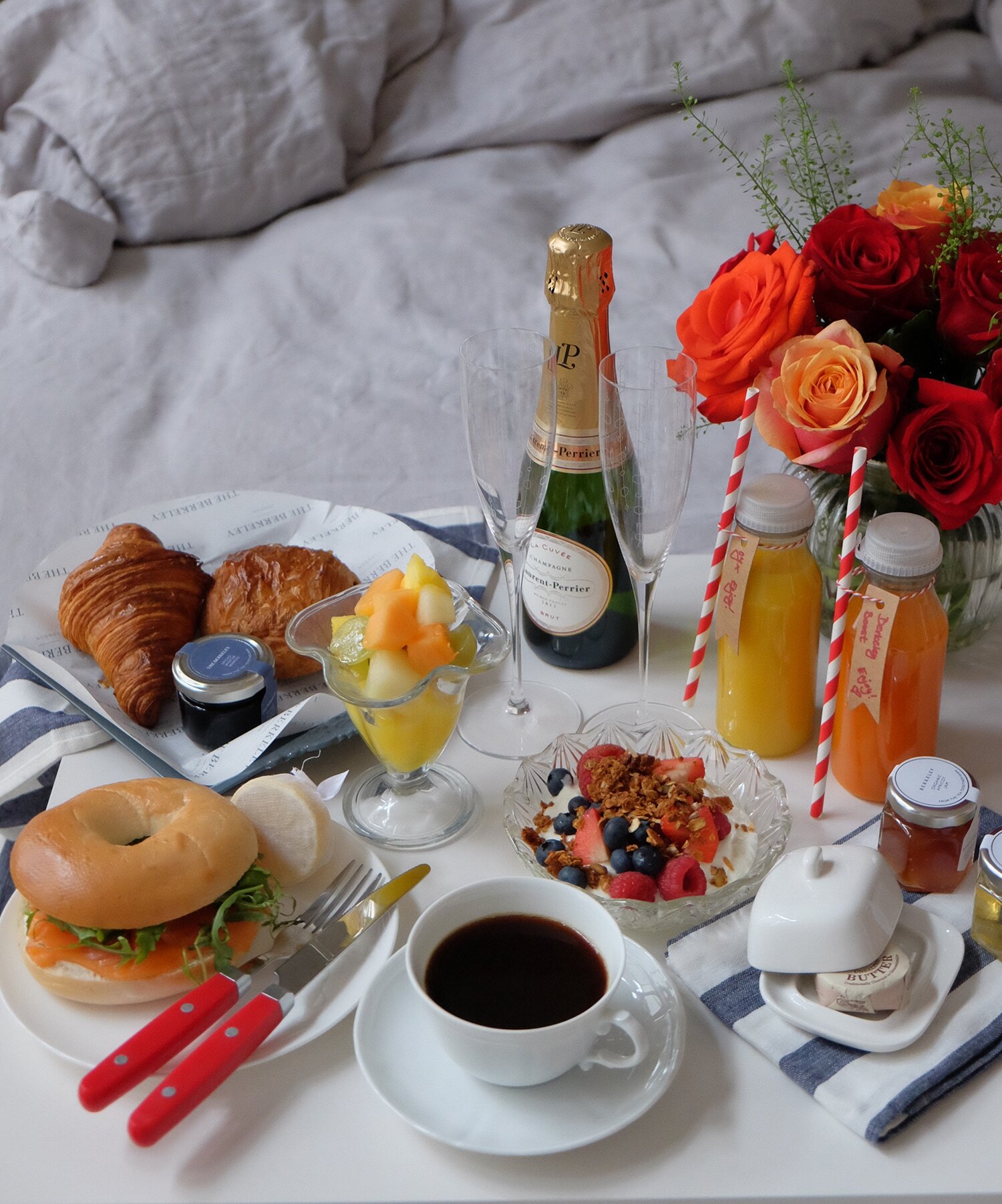
The offer includes such typical breakfast items as smoked salmon bagels, fruit salad and freshly squeezed orange juice, complete with The Times newspaper; optional extras include Champagne and flowers. The Berkeley sold more than 350 breakfasts in bed over Valentine’s weekend alone.
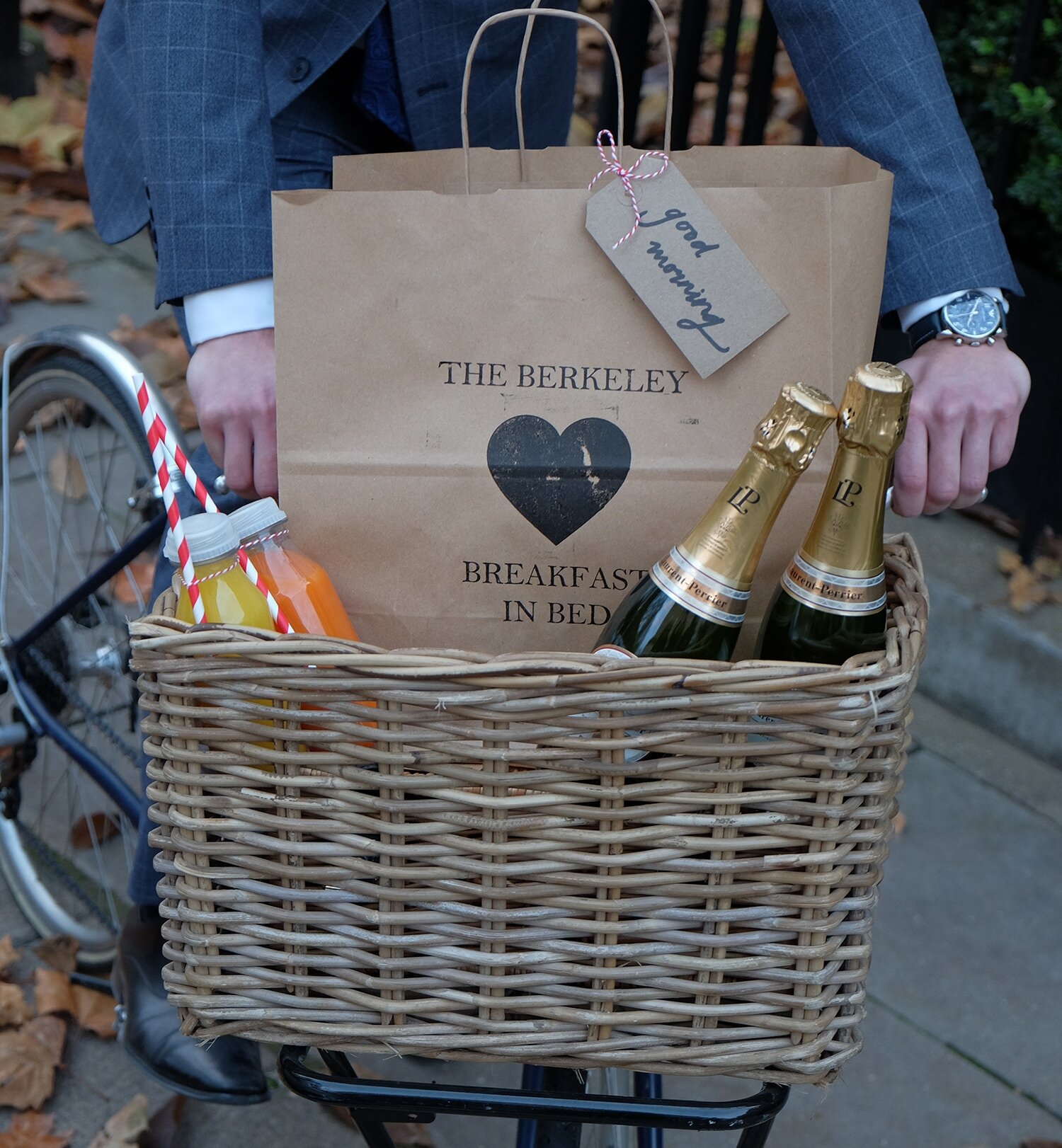
“We wanted to spread a little joy in lockdown and noticed that breakfast was a missed opportunity in a sea of dinner delivery offerings,” says Knut Wylde, general manager of the Berkeley. “Guests and customers love the personal touches from us – hand-stamped paper bags, handwritten cards, the inclusion of the day’s newspaper. And with people stuck at home keen to make the everyday special and documenting these moments on social media, it has helped that the breakfast is so Instagrammable!”
Home delivery kits fuel Matsudai’s journey from pop-up to restaurant
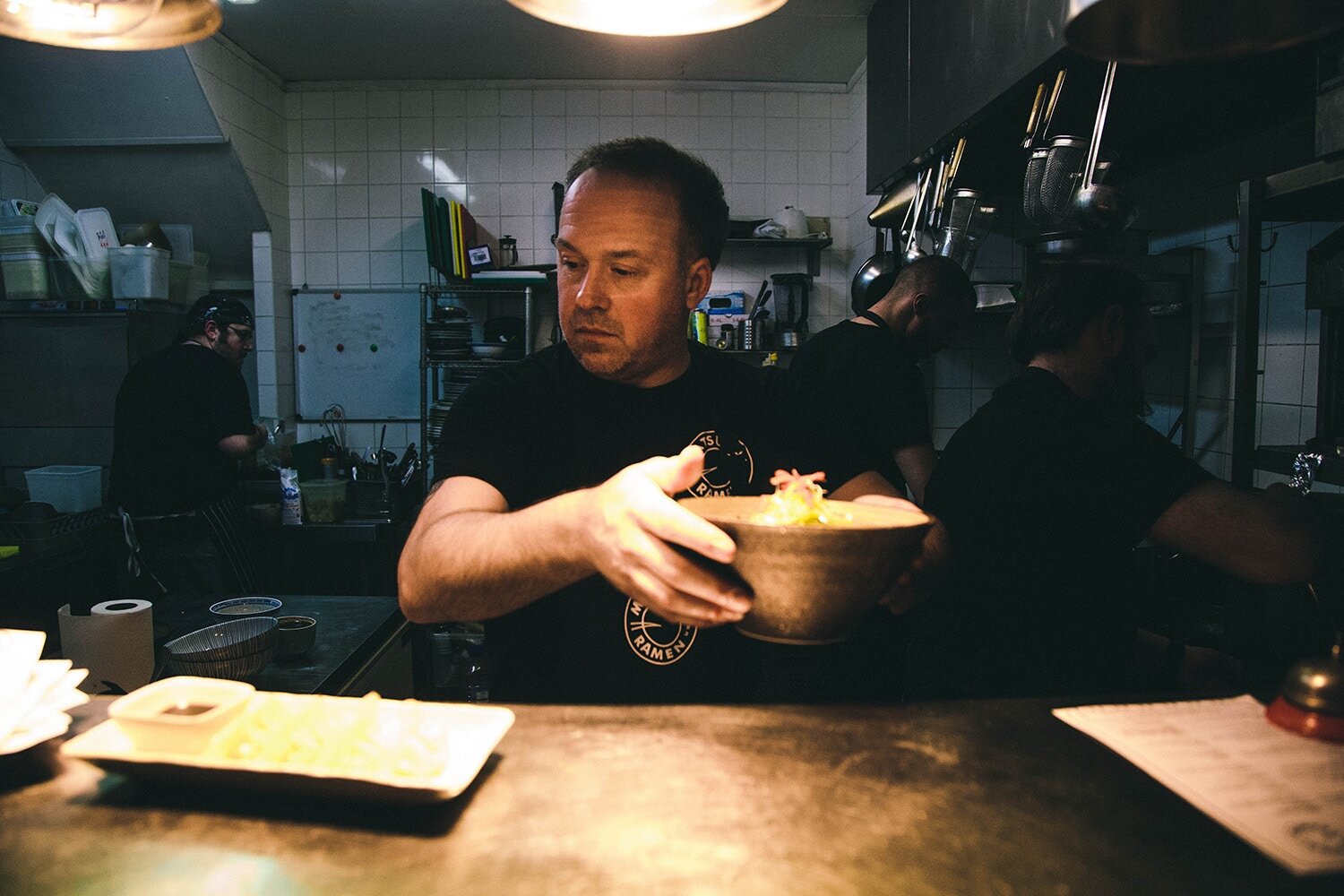
James Chant was on the verge of opening a permanent site for his successful ramen pop-up brand Matsudai when Covid hit last March, putting the brakes on his restaurant launch. But instead of feeling defeated, the self-confessed ramen addict set up an at-home meal-kit business that has been a roaring success.
Matsudai now delivers its ramen kits nationwide, selling 250 double-portion kits each week. Chant explains that traditional takeaway wasn’t ever an option for the Cardiff-based brand, because ramen doesn’t travel well. “You need to eat ramen immediately,” he says. “It needs to be hot, otherwise you lose a lot of complexity. In Japan you’re supposed to have eaten the dish within three to five minutes.”
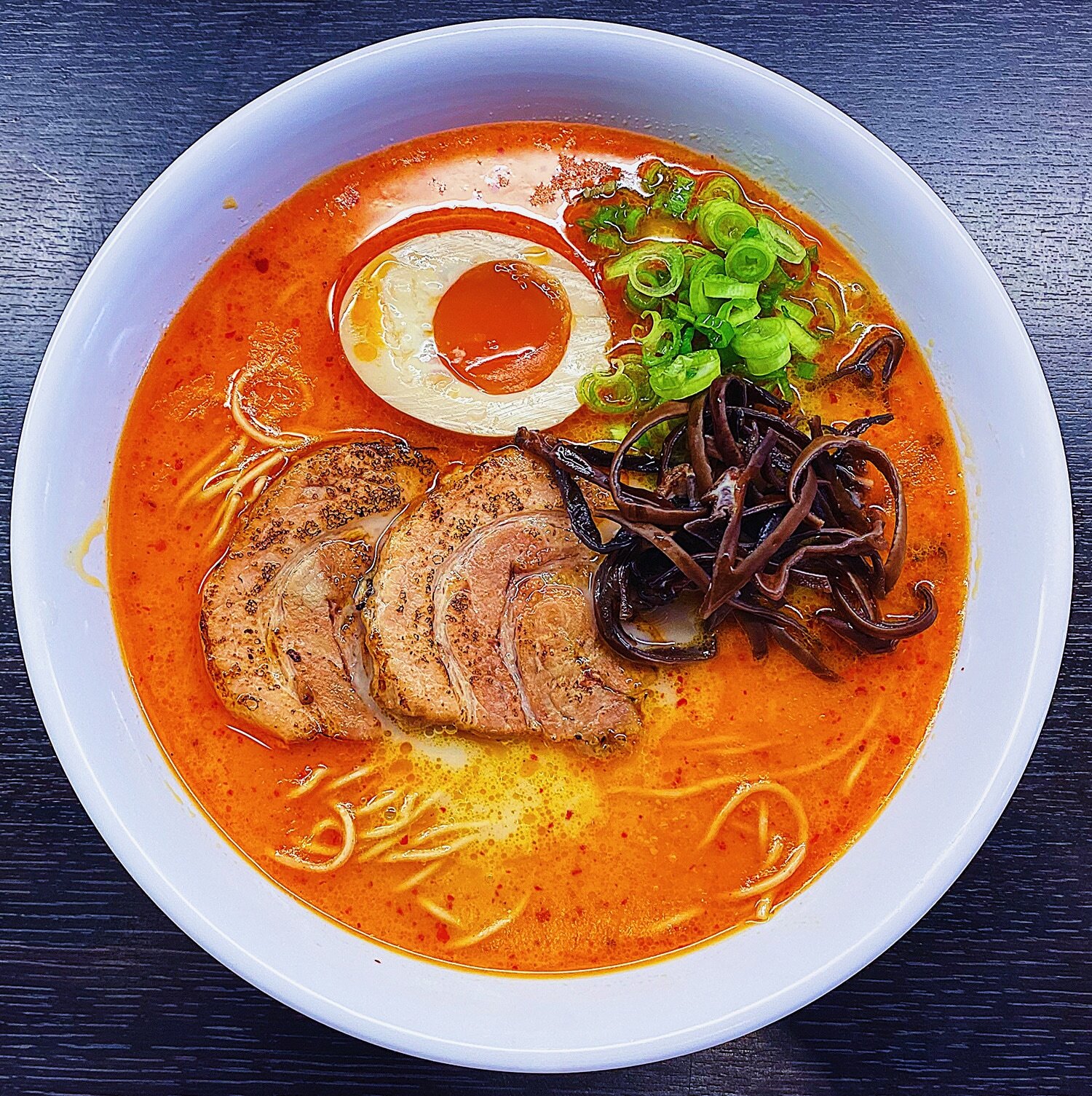
Ramen is also a very labour-intensive process, which Chant says means that not many customers will try to cook it at home. “It’s not just getting the soup right, it’s the seasonings and the aroma oils, and you could have an entire life’s work out of making noodles – it’s pretty full-on.”
The attention to detail needed by the home cook combined with closed restaurants during lockdown left a gap in the market that Chant spotted. “Once you’ve got all the elements, it’s easy to put together. It translates really well as a home kit, and it gives Instagrammable results.”
Matsudai started offering deliveries nationally with DHL only at the end of January, but he has already ramped up its operations to three units, with three full-time and four or five part-time workers. Chant says the team spends 30% of its time cooking, and 70% organising and packing the food carefully into insulated envelopes stuffed with frozen gel packs. The address labels are a particular pain-point, as they all have to be printed individually.
But the effort has undoubtedly been worthwhile, with the ramen kits selling out week after week. “In February we made a sunset version of our tonkotsu with our home-made chilli oil and spice blend, and it went crazy.”
Once Matsudai went national, the business began paying its own way. “It’s been the best marketing for us ever. We’ve been able to build our reputation, pay back our loans, set up a test kitchen, take on staff and pay people’s wages – it’s been really lovely. And when we get to the other side of this, we will be able to open a restaurant.”
Five star ingredients
StarChefs founder David Swann shares five tips on how to improve the meal experience at home.
1 Ambience and vibe
We believe the at-home meal experience as a whole should be considered, and not just the menu. Eating out at a restaurant engages all of the senses, so it’s important to add in theatrics and surprise elements to the kit, such as a music playlist, a candle or table decorations that are linked to the theme of the event.
2 Packaging
We want to be as sustainable as possible. While it is easy and cost-effective to use clear, tamper-proof plastic packaging, it’s not good for the environment. Instead, we use a sustainable box with sheep’s wool as an insulator to keep the food chilled.
3 User experience
You need to make it as easy as possible to reheat or cook the food at each stage of the process, with simple, foolproof, detailed instruction cards. It’s also important not to have people in the kitchen all night slaving over the stove or using every pan in the cupboard – people should be able to spend time with their families or guests.
4 Wow factor
Guiding people towards the Instagram moment is a must. This could be highlighting a particularly visual dish on the menu, or getting people to show off their table-laying skills.
5 Something unique
We try to home in on the chef’s craft, skills and signature style. With our Chinese New Year box, for example, most people could probably cook corn on the cob themselves, but even most professional chefs wouldn’t be able to replicate the incredibly complex and flavourful XO sauce that Andrew Wong created to pair with it. Providing the diner with something exceptional that they cannot replicate on their own makes the difference between a forgettable dinner and a memorable experience.



